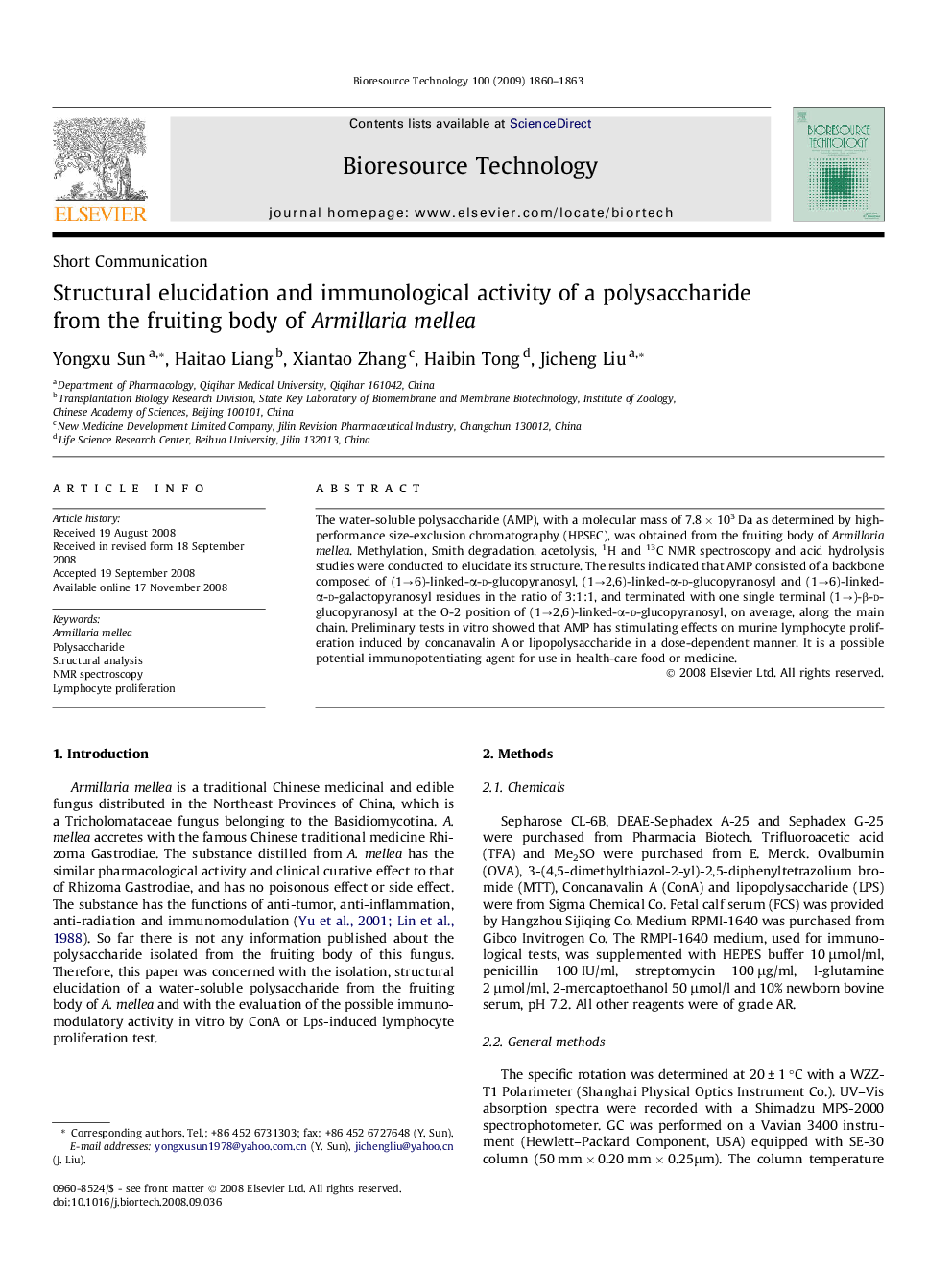| Article ID | Journal | Published Year | Pages | File Type |
|---|---|---|---|---|
| 683513 | Bioresource Technology | 2009 | 4 Pages |
The water-soluble polysaccharide (AMP), with a molecular mass of 7.8 × 103 Da as determined by high-performance size-exclusion chromatography (HPSEC), was obtained from the fruiting body of Armillaria mellea. Methylation, Smith degradation, acetolysis, 1H and 13C NMR spectroscopy and acid hydrolysis studies were conducted to elucidate its structure. The results indicated that AMP consisted of a backbone composed of (1→6)-linked-α-d-glucopyranosyl, (1→2,6)-linked-α-d-glucopyranosyl and (1→6)-linked-α-d-galactopyranosyl residues in the ratio of 3:1:1, and terminated with one single terminal (1→)-β-d-glucopyranosyl at the O-2 position of (1→2,6)-linked-α-d-glucopyranosyl, on average, along the main chain. Preliminary tests in vitro showed that AMP has stimulating effects on murine lymphocyte proliferation induced by concanavalin A or lipopolysaccharide in a dose-dependent manner. It is a possible potential immunopotentiating agent for use in health-care food or medicine.
